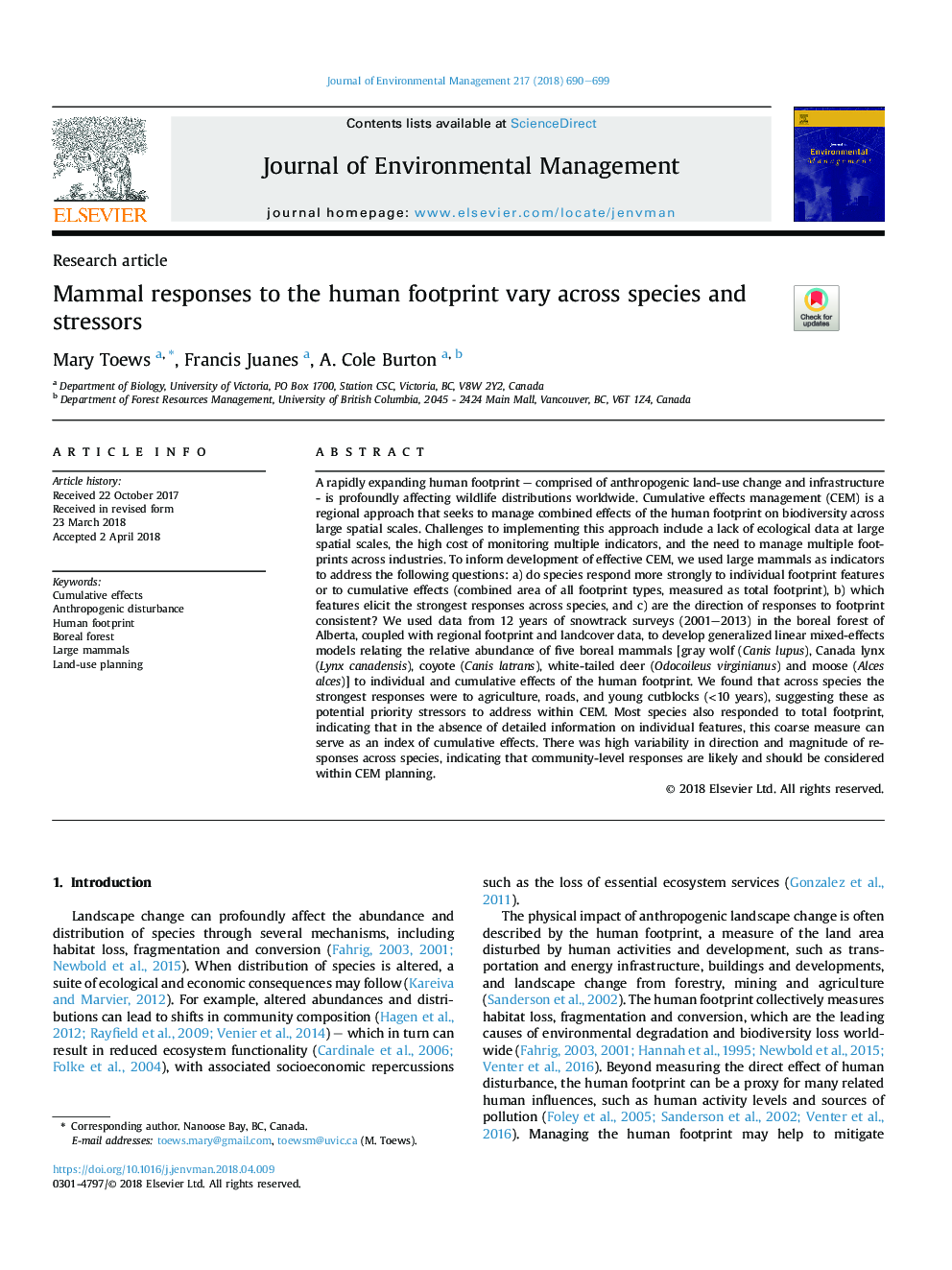| Article ID | Journal | Published Year | Pages | File Type |
|---|---|---|---|---|
| 7477708 | Journal of Environmental Management | 2018 | 10 Pages |
Abstract
A rapidly expanding human footprint - comprised of anthropogenic land-use change and infrastructure - is profoundly affecting wildlife distributions worldwide. Cumulative effects management (CEM) is a regional approach that seeks to manage combined effects of the human footprint on biodiversity across large spatial scales. Challenges to implementing this approach include a lack of ecological data at large spatial scales, the high cost of monitoring multiple indicators, and the need to manage multiple footprints across industries. To inform development of effective CEM, we used large mammals as indicators to address the following questions: a) do species respond more strongly to individual footprint features or to cumulative effects (combined area of all footprint types, measured as total footprint), b) which features elicit the strongest responses across species, and c) are the direction of responses to footprint consistent? We used data from 12 years of snowtrack surveys (2001-2013) in the boreal forest of Alberta, coupled with regional footprint and landcover data, to develop generalized linear mixed-effects models relating the relative abundance of five boreal mammals [gray wolf (Canis lupus), Canada lynx (Lynx canadensis), coyote (Canis latrans), white-tailed deer (Odocoileus virginianus) and moose (Alces alces)] to individual and cumulative effects of the human footprint. We found that across species the strongest responses were to agriculture, roads, and young cutblocks (<10 years), suggesting these as potential priority stressors to address within CEM. Most species also responded to total footprint, indicating that in the absence of detailed information on individual features, this coarse measure can serve as an index of cumulative effects. There was high variability in direction and magnitude of responses across species, indicating that community-level responses are likely and should be considered within CEM planning.
Keywords
Related Topics
Physical Sciences and Engineering
Energy
Renewable Energy, Sustainability and the Environment
Authors
Mary Toews, Francis Juanes, A. Cole Burton,
